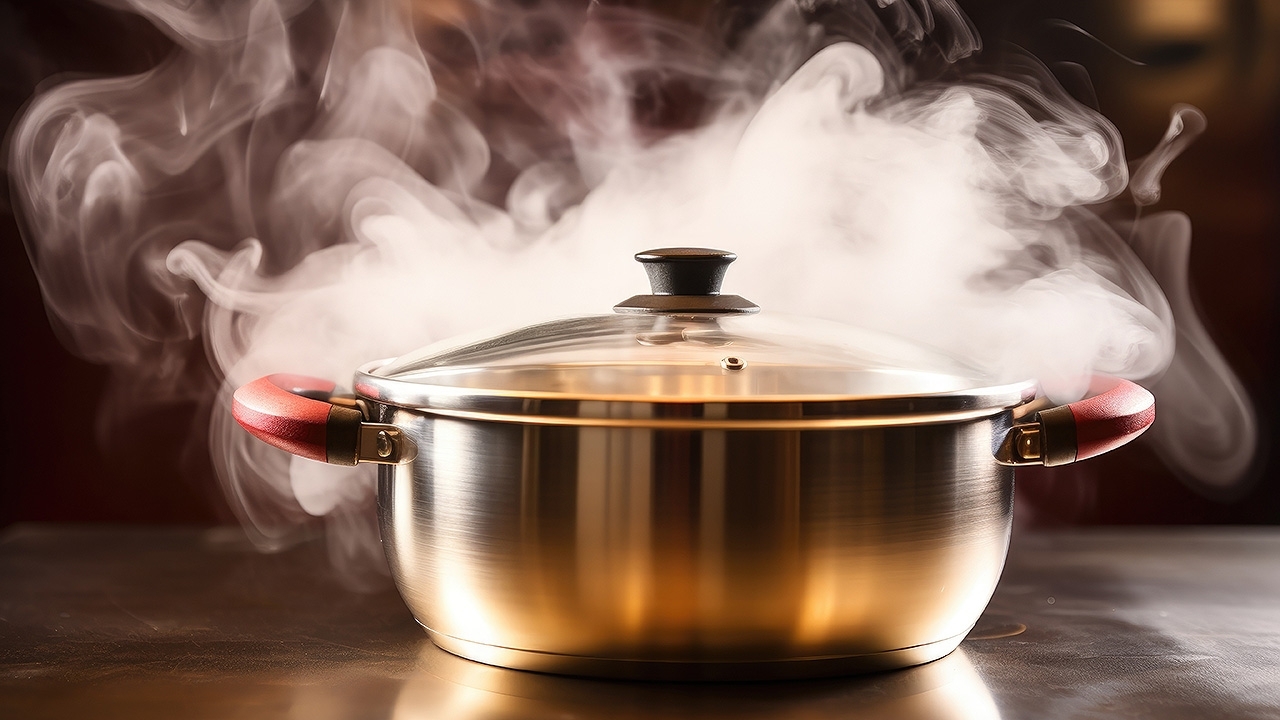Plant Protection Today: USDA’s Treatment and Inspection Methods Laboratory Researchers Steam Ahead

One Step Closer to an Alternative Fruit and Vegetable Treatment Option
By Sharon Lucik
Most of us are familiar with steam. We use it to cook our food, clean our floors, heat our homes, and remove wrinkles from our clothes. Steam is a powerhouse—and possibly the next big thing to impact U.S. imports, exports, and our domestic agricultural produce markets. At least that’s how USDA’s Biological Scientist Xikui Wei sees it. He believes this clean and odorless gaseous form of water we know as steam may be the answer to significantly reducing our use of methyl bromide for treatments of fresh fruits and vegetables.
Five years ago, Wei and Biological Science Lab Tech Luis Bradshaw started researching phytosanitary treatment alternatives to methyl bromide—a restricted ozone-depleting chemical. Initially the duo tested vacuum steam on infested tropical and cold-climate fruits. Although the treatment was effective in eliminating targeted pests, it was impractical for large-scale commercial use for fruit treatment. That’s when Wei decided to drop the vacuum component and instead focus exclusively on steam.
“Given what we knew about the principle of vacuum steam treatment, we were quite certain we could modify the method and still achieve the same positive results,” Wei said. “We just needed to test and prove it.”
And they did.
Wei and Bradshaw built a portable steam treatment system—about four-times the size of a household dish washer—to conduct trials in quarantine areas. With infested cherries, citrus, and apples, they repeatedly demonstrated that the steam treatments effectively eliminated the target pests. The outcomes from these studies informed their research and method development going forward and catapulted their efforts to a grander scale.
Fast forward to October 2023. Materials and parts began to arrive at USDA’s Treatment and Inspection Methods Laboratory (TIML) in Miami, FL, and Wei and Bradshaw took inventory. Plywood sheets, insulation sheets, 2 by 4s, metal brackets, steel pipes, CPVC pipe, hoses, tubing, a vent hood, and a roller conveyer, along with a steam generator, and a programmable controller.
“Our fundamental research and methods did not change; we just supersized the treatment chamber,” Wei explained. “We retrofitted a 20-foot long, 5,000-pound sea container to demonstrate the scalability of the steam treatment system and its potential as a real-world phytosanitary treatment. The chamber’s two bins can each hold about 1,000 pounds of fruit. The treatment process is fully automated with precision steam temperature controls and a hydro-cooling option to cool the treated fruits and preserve its quality.”
In August, Wei and Bradshaw scheduled a demonstration of their newly constructed steam treatment chamber system for USDA’s Plant Protection and Quarantine Associate Deputy Administrator Dr. Wendy Jin and TIML colleagues to test the system's mechanics. For this "mock" demonstration, they used potatoes to represent the infested commodity and found the entire steam treatment process was nearly flawless.
“Designing and building the steam treatment chamber was a tremendous undertaking that proved to be a remarkable achievement,” Jin said. “After witnessing the operation, I have no doubt about steam’s potential as a phytosanitary treatment for fruits and vegetables.”
In the meantime, Wei and Bradshaw continue their research and are getting closer to perfecting steam’s power and application. Looking ahead to next year, the researchers anticipate using this newly built steam treatment system for studies on fruit quality impact. Our goal is to develop an alternative fruit and vegetable treatment that is effective, environmentally friendly, economical, and easy to use.

#
APHIS protects the health of U.S. agriculture and natural resources against invasive pests and diseases, regulates genetically engineered crops, administers the Animal Welfare Act, and helps people and wildlife coexist. We also certify the health of U.S. agricultural exports and resolve phytosanitary and sanitary issues to open, expand, and maintain markets for U.S plant and animal products.
USDA touches the lives of all Americans each day in so many positive ways. In the Biden-Harris Administration, USDA is transforming America’s food system with a greater focus on more resilient local and regional food production, fairer markets for all producers, ensuring access to safe, healthy and nutritious food in all communities, building new markets and streams of income for farmers and producers using climate smart food and forestry practices, making historic investments in infrastructure and clean energy capabilities in rural America, and committing to equity across the Department by removing systemic barriers and building a workforce more representative of America. To learn more, visit www.usda.gov.

